I had a dream to be the next Margaret Mitchell (Gone with the Wind),
Harper Lee (To Kill a Mockingbird), or J.D. Salinger (Catcher in the Rye).
What do these three writers have in common? They wrote one spectacular novel and were able to live off the royalties for the rest of their lives. The pressure was off!
Call me lazy, but I loved the idea of writing a great book, thus proving myself to be of some worth in the world, then spending the rest of my life in quiet bliss writing and reading, but not having to “perform.”
It didn’t take long to realize that wasn’t going to happen.
After I accepted that, I kept writing because I liked to. I enjoy wordsmithing, using a thesaurus and making stuff up.
Walking is a Great Stress-Reliever, Idea-Percolator, and Problem-Solver
To cope with the challenges of writing, and life itself, I’m a dedicated walker/hiker and spend time in nature. I get outside nearly every day to walk, preferably including some steep terrain.
Walking is a great stress-reliever, idea-percolator, and problem-solver. I live on a lake now, and I swim every day that the water is hospitable. I’m a true believer in exercise—it’s the closest thing to a silver bullet for mental and physical health that I know.
I read a lot of inspirational books—Spiritual Economics by Eric Butterworth comes to mind. I subscribe to a little magazine, Daily Word, that provides inspirational thoughts every day.
To Combat Hours Sitting, I Use a Stand-Up Desk and Regular Walks
In my communications career I spent a lot of time at a desk when I wasn’t out covering stories. It was challenging physically to sit for hours each day, then do more of the same on the weekends when I worked on my novels. I suffered hand, wrist and back pain.
One solution that helped a lot was replacing my standard desk with a stand-up desk. I walked every day during my lunch time, took long walks or hikes on the weekends, and snow skied in the winter. I spent as much time in nature as I could. Nature is a healing environment for me. It all helped keep me as healthy as possible.
Nowadays I don’t have to go to a day job anymore (hurrah!), so I don’t have to spend as much time at a desk; the hands and wrists and back don’t hurt anymore. I get to exercise outside a lot, often two hours daily, and spend more time in nature.
Even as I write this, I glance out the window next to my desk to see the calming waters of Lake Chelan about twenty feet away. I’m very lucky. I appreciate my environment, my life and my health.
Wellness Recommendations from an Inspired Writer
For wellness ideas, I really enjoyed a book called The Blue Zones: 9 Lessons for Living Longer From the People Who’ve Lived the Longest by Dan Buettner. Buettner studied longevity hotspots around the world where people are thriving into their hundreds. I learned a lot about diet and lifestyle from the book and website.
I read the New York Times Wellness section and have always enjoyed Times wellness journalist Jane Brody’s columns and books.
A postscript—I attended two different speaking engagements of two well-known authors, and was shocked to see their dismal physical condition. Each could barely climb the stairs to the podium. That inspired me to move and exercise, and to get away from the computer.
The Two Activities That Gave Me Credibility as a Writer
In my communications career, I found the work I loved to do. I changed careers after more than a decade as school librarian to marketing communications at a medical center, and then communications officer for a large school district because I wanted to make a living as a writer.
Making the transition from education to corporate writing required some resume building. Writing for free or for very little made my career transition possible.
When I was a librarian, I volunteered to write and produce a health/wellness newsletter for the school district beyond the scope of my regular job. Outside of work, I wrote and sold articles to magazines, including several articles on health and wellness.
Those two activities, which didn’t bring in much money, gave me credibility as a writer and made me a viable candidate for the medical center position of newsletter editor. At the medical center my job expanded to managing the internet and intranet, including writing content, as well as working with professional filmmakers and photographers. Fun stuff.
In retrospect, a college degree in journalism would have been a wise choice for me.
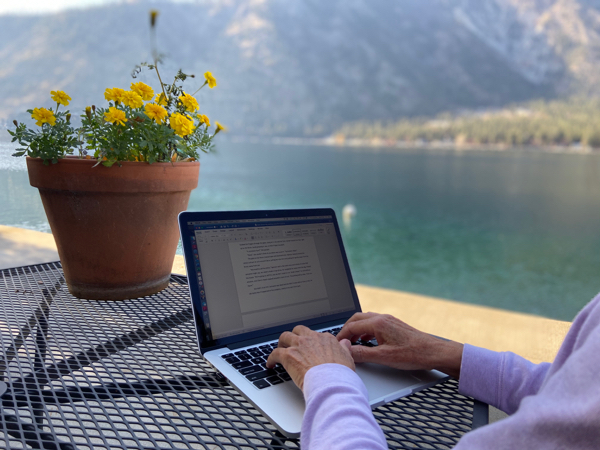
How Actual Events Inspire My Creativity
For me, being jump-started by actual events has shaped each of my novels. Invisible by Day is a historical novel in a Downton Abbey setting. When I sat down to write it (years before Downton Abbey arrived on BBC), I had some vague notion of foggy Scottish moors and mystery with a young woman protagonist, inspired by the Eleanor Hibbert (writing as Victoria Holt and Jean Plaidy) and Phyllis Whitney novels I read as a teenager.
After writing Invisible by Day for a while I realized I didn’t know the year, the current technology (gaslights for streetlights? electricity?), or where the heck my characters even lived! I did a huge amount of research about Great Britain in the World War One era, the war itself, and the British Secret Service group called Room 40.
They say, write about what you know. I certainly did not do that with my first novel.
My second novel, The Clovis Dig, was inspired by an actual archaeological discovery in East Wenatchee, Washington, where I lived. I was a high school librarian at the time, and went along on a field trip to the site. I was fascinated, and kept all the newspaper clippings and magazine articles about the dig.
There was real drama there, with Native American protests and friction between the archaeologist. I took those themes and ran with them. The Clovis Dig will be published this spring/summer 2020.
My third novel, tentatively titled Lena’s Grit, will come out in 2021. It’s inspired by the true story of an athlete imprisoned during the Yugoslavian civil war, and the woman who tries to save him.
Human Beings are Creative Creatures
I’ve wondered why any of us bother to write made-up stories and read them. Then I look around at the people I know.
One former librarian colleague, Claudia Wiggins, is a talented artist. Along with painting, she paired up with another colleague, Jennifer Burke, to write children’s books. Claudia co-writes and illustrates the books.
My book covers have been designed by an amazing graphic artist Dale Pease. A longtime friend, Michal Thompson, knits and crochets the most beautiful things, and creates hand-made greeting cards.
My husband Don has immersed himself in architecture and design his whole life. He built a cabin with his own hands, designed two homes we had built, and is re-designing and remodeling the home we live in now.
Human beings are creative creatures, and that creativity comes out in different ways. Mine happens to be writing.
Book Marketing Tactics that Have Worked for Me So Far
Marketing is my greatest challenge. I do book signings at bookstores, I visit bookstores and give them copies of my books when I travel, I’m active on social media, my publisher and I advertise on Amazon and social media, and I send news releases to the regional media.
A marketing inspiration is northwest author JA Jance; I’ve attended several of her talks. Marketing and connecting with people propelled her books to bestsellers. Early in her career she developed relationships with many bookstore owners. She contacts them whenever a new book comes out.
She jokes that you can still find a rare, unsigned JA Jance novel. She is a regular speaker at conferences, and donates her time to worthy causes, such as donating her time to a Rotary auction for a dinner with JA Jance. She says she attended Toastmasters to help her with public speaking early on, and I have as well.
We all need a website. I’m re-working mine with a designer now. Other marketing advice I’ve gotten is to get out there and teach sessions at writer’s conferences, volunteer to be on panels at conferences and workshops, arrange talks with local libraries and bookstores, write a blog, send out a regular newsletter, and build that newsletter list to as many people as possible.
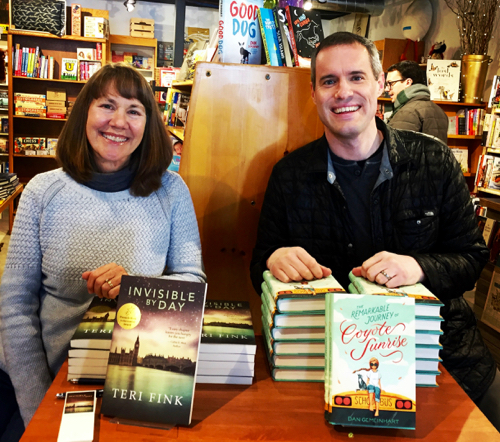
Finding Time to Write: A Remote Cabin Helps
My husband and I bought some lake-front property a long time ago in a remote section of fifty-fife-mile long Lake Chelan. We had no electricity. At first there were no cell phones, and later, no cell service. At the end of the county road, we had to drive a two and a half mile two-track jeep trail to get there.
It was every writer’s dream—solitude in a beautiful setting. We spent most of our weekends and vacations there building a cabin. We camped for the first seven years.
I helped a lot at first, but once the structure was up—and I realized it was going to take years to finish—my husband took over the building while I concentrated on writing and reading. I wrote a lot at that remote cabin, taking breaks to gaze out at the spectacular view; bald eagles and osprey and geese as they soared over the blue water. By-land visitors included deer, big horned sheep, chukar, and the occasional bear, cougar and bobcat.
During the work week, when I was on a deadline, I arrived at the office an hour early and worked on my novel.
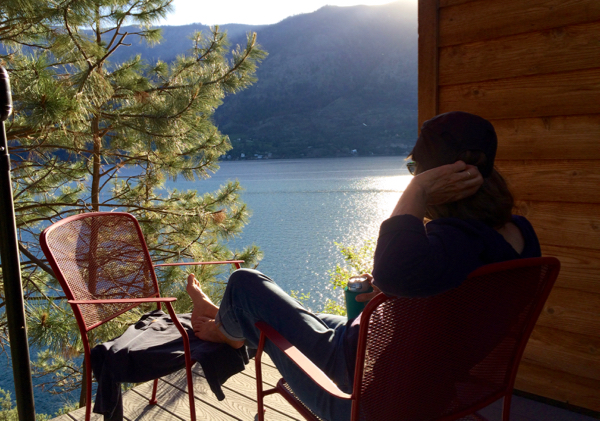
Advice for a Young Writer: Read, Learn, Join a Writer’s Group, Attend Conferences, and Enter Literary Contests
1. Read as much as you can, write as much as you can, quoting Margaret Atwood.
When Margaret Atwood’s Handmaid’s Tale came out in 1985, I was so taken with the novel that I wrote her a letter. Not only did I tell her how meaningful I found the novel, but I asked her what advice she had for a young writer starting out.
I still have her letter of reply. She wrote: “My advice to all young writers is read as much as you can, write as much as you can. Get your hands on the small magazines (in the US magazines like The Paris Review, The North American Review, here in Canada The Malahat Review, Fiddlehead). There are usually bookstores around that stock a wide variety of magazines (here in Toronto Longhouse Books does this)—find such a store and read what’s out there.”
2. Keep learning.
I recently took an online Master Class taught by Margaret Atwood. I learned a lot, and it was fun to be taught by a true master of the craft. I recommend MasterClass – www.masterclass.com — where you learn from the best in the world.
3. Join a writing group and attend writer’s conferences.
I’m a member of PNWA, Pacific Northwest Writers Association, and I attend their annual conference in Seattle as often as I can. Find an organization near where you live. Not only are the classes and sessions valuable, but these big conferences are where publishers and agents from New York, California, and all across the US come, seeking out authors and their work.
You get to meet some big-name authors, which is always exciting and inspiring. These organizations also help advertise our books. I wouldn’t be a guest on this Writing and Wellness website were it not for PNWA (Pacific Northwest Writer’s Association), where Colleen saw my book mentioned.
Note from Colleen: I’m also a member of PNWA, and have attended several of their conferences. I echo Teri’s recommendations here! The organization also offer great contests for writers looking for feedback—the contests often include at least two critiques, which can be super helpful.
4. Enter literary contests.
I’ve been lucky enough to win first place in a PNWA literary contest, and first place in the Write on the River literary contest. I’ve been finalist in the San Francisco Writers Contest and Tucson Festival of Books Literary Contest.
Placing in these contests is a resume-builder that gives one credibility in the eyes of potential publishers and agents. Now that I’m published, I still enter contests. Invisible by Day was named Top 5 Finalists for Literary Fiction in the Kindle Book Awards for 2019. The novel is also a Beverly Hills Book Award Finalist for Historical Fiction, won the NABE Pinnacle Book Achievement Award for Fiction 2018, and was chosen as a TaleFlick Discovery book for 2020, in which visitors to TaleFlick.com vote on the stories they would like to see adapted to film or TV.
I submitted the novel to all of these organizations. The awards provide great recognition for marketing books.
* * *
Teri Fink grew up amidst the apple orchards of Wenatchee, Washington. Her career has taken her from librarian, to corporate writer and communications officer and novelist. Her writing has won literary awards for both fiction and nonfiction. She’s a member of the Pacific Northwest Writers Association and Write on the River. Teri and her husband live on beautiful Lake Chelan in central Washington State.
For more information on Teri and her work, please see her website, and connect with her on Facebook, Twitter, and Instagram.
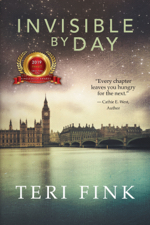 Invisible by Day: Invisible by Day intertwines the lives of England’s working class and wealthy elite in a World War I, Downton Abbey setting. Beautiful, ambitious Kate has three men in her life—the aristocrat who is obsessed with her, the suitor who wants to marry her, and the man who must save her.
Invisible by Day: Invisible by Day intertwines the lives of England’s working class and wealthy elite in a World War I, Downton Abbey setting. Beautiful, ambitious Kate has three men in her life—the aristocrat who is obsessed with her, the suitor who wants to marry her, and the man who must save her.
The book was originally published in 2016 by Booktrope Publishing of Seattle. A second edition was published in 2018 by Evolved Publishing of Butler, Wisconsin. It was named Top 5 Finalists for Literary Fiction in the Kindle Book Awards for 2019. The novel is also a Beverly Hills Book Award Finalist for Historical Fiction and won the NABE Pinnacle Book Achievement Award for Fiction, 2018. It has been chosen as a TaleFlick Discovery book for 2020, in which visitors to TaleFlick.com vote on the stories they would like to see adapted to film or TV.
Buy the book at any of your favorite bookstores. Find all online links here.
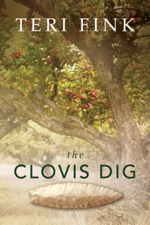 The Clovis Dig is a multi-cultural mystery. Orchardist Claire Courtney is struggling to make a living when strange rocks are unearthed beneath her apple trees. She calls in the archaeologists—Native American rookie Joe Running and renowned expert Spencer Grant. The objects are identified as ancient artifacts belonging to the Clovis People.
The Clovis Dig is a multi-cultural mystery. Orchardist Claire Courtney is struggling to make a living when strange rocks are unearthed beneath her apple trees. She calls in the archaeologists—Native American rookie Joe Running and renowned expert Spencer Grant. The objects are identified as ancient artifacts belonging to the Clovis People.
Will the discovery bring Claire the money she so desperately needs, or risk her home and livelihood handed down through generations? When the dig is underway the local Tribes turn out in protest, claiming the artifacts as their own. When the archaeologists begin to clash, Claire doesn’t know who to trust.
Everything comes to a standstill when the excavators exhume a shocking find, and an investigation of a different kind begins. The Clovis Dig, will be published by Evolved Publishing in spring/summer 2020.

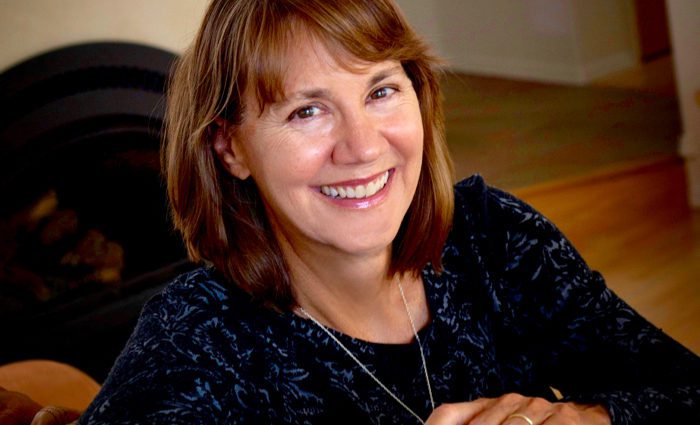
Super article. Thanks Teri.
Loved this article! Keep it up Teri! Jan